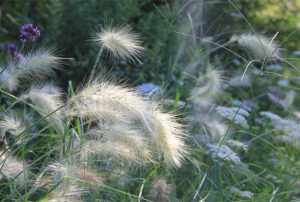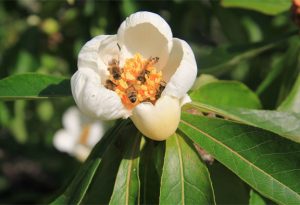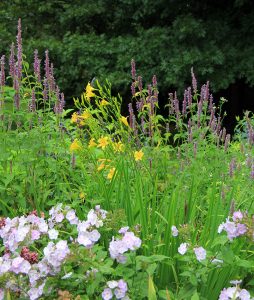Along the Garden Path

Murmurations and Other Hints of Late Summer

Feathertop grass ( Pennisetum villosum)
This last week of August is still very much summer, but there are hints of the seasonal shift. There are the obvious changes in the light noticeable in the mornings and evenings, and we’ve finally received some much-needed rain. Also typical of late summer are the mixed messages of temperatures fluctuating from hot and humid to cool and dry. However, flowers from annuals, perennials and trees seem to be soaking up the sunshine, loving this time of year. The wildlife is also taking full advantage to forage on the abundant nectar, pollen and seeds the garden flowers have to offer.
The annuals we sowed from seed in the greenhouse in March and then set out are now in full bloom. The Cutting Garden zinnias (Zinnia elegans) are attracting so many butterflies that we watch them interact playfully with each other — or perhaps they’re vying for territory. Feathertop grass (Pennisetum villosum) sparkles in the afternoon light and reminds me how small it was when we planted them in early June.

Franklinia alatamaha flower with honeybees
On the front lawn, the Franklin tree (Franklinia alatamaha) is a magnet for bees this week — their elegantflowers are large enough for a crowd and will bloom for weeks. Another favorite late-summer bloomer is daylily (Hemerocallis ‘Wee Willie Winkie’), with a myriad of small, bright yellow, fragrant blooms on tall stems. They sure brighten the North Garden flower combinations.
One more hint of the summer seasonal shift are the flocks of starlings flying in coordinated patterns. These flocks are called murmurations and I was surprised by the first one this week on the great lawn. It’s mesmerizing to watch their flying accuracy with swirling dance-like patterns, and I’m again reminded of the amazing interplay of the seasons, gardens and wildlife.

Daylily (Hemerocallis ‘Wee Willie Winkie’)
Click here to view a video of a starling murmuration.
Featured Image: Butterfly on a Zinnia flower.
